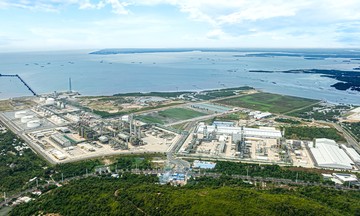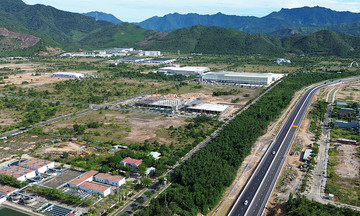Lutnick shared this projection on 7/8, stating that the revenue significantly exceeds the $30 billion projected last month due to the implementation of higher tariffs on goods from dozens of countries.
"Next will be tariffs on semiconductors, pharmaceuticals, and other goods – all of which will generate additional tax revenue," Lutnick said in an interview with Fox Business Network.
The new import tariffs announced by President Donald Trump took effect on 7/8, raising the average US tariff rate to its highest level in a century. The tariffs on affected countries range from 10% to 50%.
On 6/8, Trump also announced plans for a 100% tariff on imported semiconductors if manufacturers don't commit to building plants in the US. Import tariffs on pharmaceuticals will also be implemented, starting low and gradually increasing to 250%.
Details of these tariffs will be released in the coming weeks after the US Department of Commerce completes its investigation into the impact of these imports on national security.
 |
US Commerce Secretary Howard Lutnick in a meeting on 5/6. Photo: Reuters |
US Commerce Secretary Howard Lutnick in a meeting on 5/6. Photo: Reuters
Lutnick stated companies can be exempt from the semiconductor tariffs if they submit plans to build plants in the US, which will be overseen by independent auditors.
"Trump's goal is to bring chip production back to the US," he said, predicting the initiative could attract about $1,000 billion in investment to boost domestic production.
Some exemption agreements have been reached, including with the European Union, which agreed to a 15% tariff on most exports, including chips. Japan also confirmed the US will not impose higher tariffs on them compared to other countries.
The effort to strengthen domestic chip production is not new. In 2022, the US Congress under President Joe Biden passed a $52.7 billion subsidy program for semiconductor manufacturing and research. By last year, all five leading global chip corporations had committed to building plants in the US.
According to the US Department of Commerce, the US produced only 12% of global semiconductor output last year, down significantly from 40% in 1990.
When asked about separate negotiations with China to extend the tariff truce set to expire on 12/8, Lutnick said an agreement is possible.
"I think this will be decided by the trade negotiation team and the President, but it seems they will reach an agreement and extend it for another 90 days. However, the final result depends on the negotiating team," he said.
Quynh Trang (Reuters)












